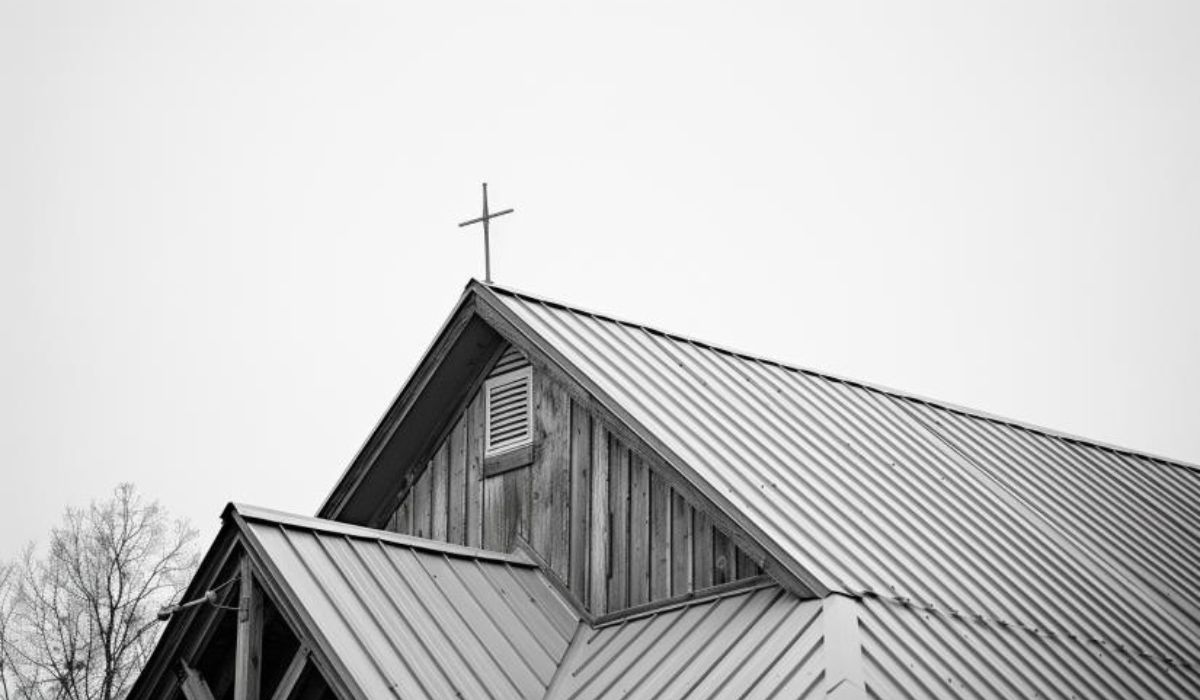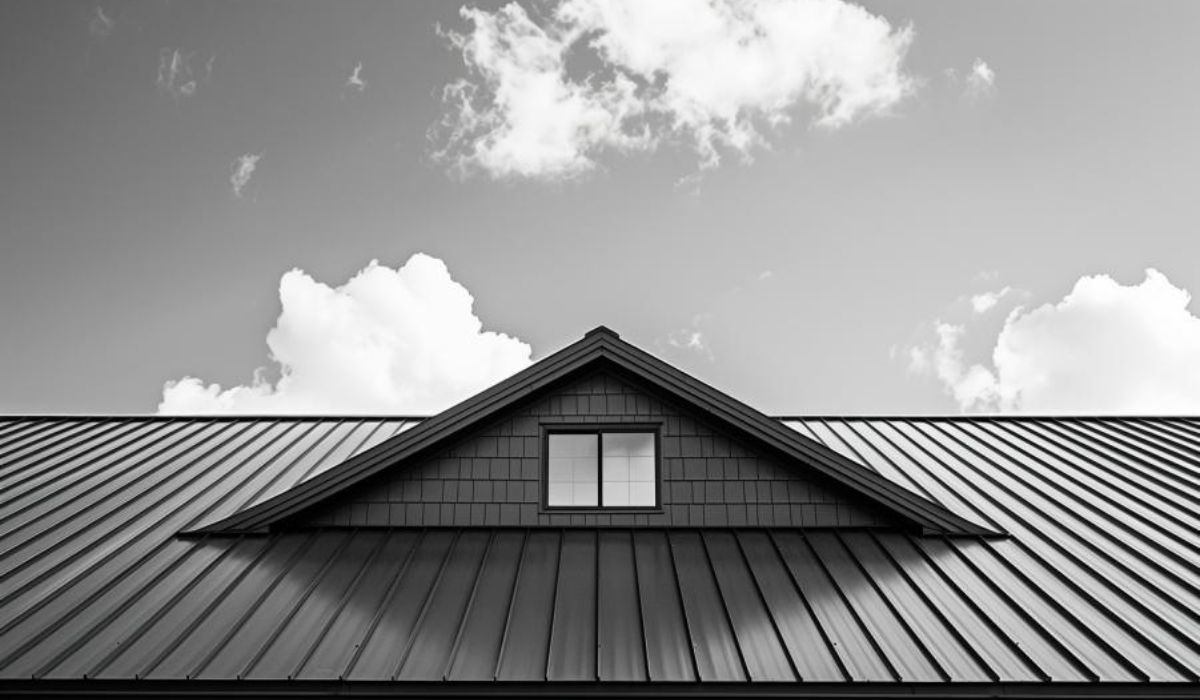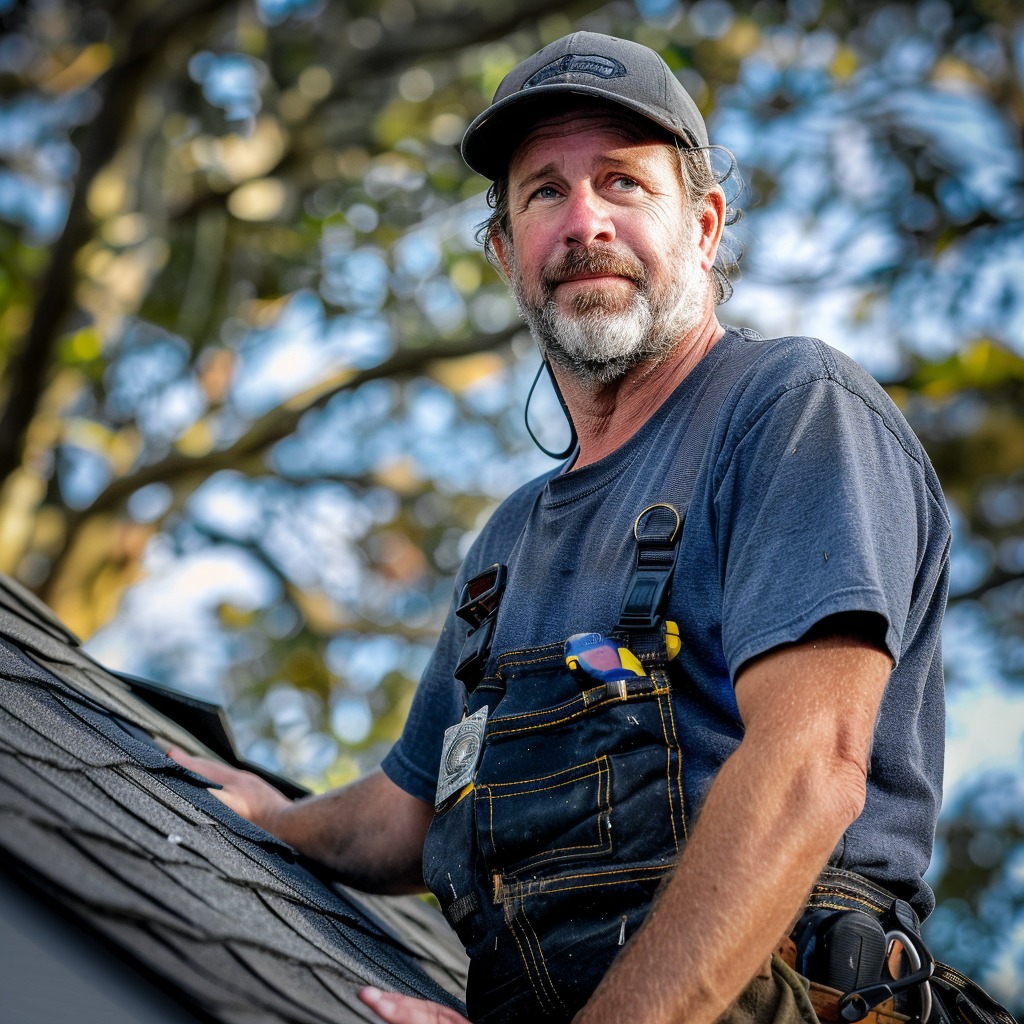
Metal roofs are renowned for their durability, energy efficiency, and aesthetic appeal. But did you know that the underlayment plays a crucial role in ensuring the long-term performance and protection of metal roofing?
You might be wondering: What is the best underlayment for a metal roof? Is it felt, synthetic, or self-adhered underlayment? Each option has its own advantages and limitations, making the choice a critical decision for homeowners and contractors alike.
In this article, we will explore the top choices for underlayment for metal roofs, delve into their features and benefits, and help you make an informed decision for your roofing project.
Key Takeaways:
- Felt underlayment is a traditional and cost-effective choice but may have limitations in extreme weather conditions.
- Synthetic underlayment offers superior performance and durability but comes at a higher price.
- Self-adhered underlayment is easy to install and resistant to water and wind but may not perform well in colder temperatures.
- Top brands for metal roof underlayment include GAF, Tyvek, Owens Corning, Grace, RhinoRoof, and Grip-Rite.
- The right underlayment is crucial for ensuring the longevity and performance of your metal roof.
Felt Underlayment for Metal Roof
Felt underlayment, also known as asphalt-saturated felt or roofing felt, is a traditional and cost-effective option for metal roofs. It is made from cellulose or fiberglass mat saturated with asphalt, creating a durable and water-resistant barrier.
Felt underlayment comes in two thickness options: 15 mil and 30 mil. The thicker variant offers better durability but can be challenging to transport and install.
While felt underlayment is less expensive than synthetic options, it has limitations in extreme weather conditions and may wear out quicker than the metal roofing material.
Synthetic Underlayment for Metal Roof
Synthetic underlayment is a newer and more advanced option for metal roofs. Made from synthetic materials like polypropylene or polyester, it offers superior water resistance and durability compared to traditional options. Unlike underlayments that rely on asphalt, synthetic underlayment utilizes advanced polymer technology.
One of the main advantages of synthetic underlayment is its lightweight nature, making it easier to handle during installation. Additionally, it is resistant to temperature changes, UV rays, and wind uplift, providing long-lasting protection for your metal roof.
However, it’s important to note that synthetic underlayment is generally more expensive than felt underlayment. This price difference is due to the advanced materials and manufacturing processes involved in producing synthetic options.
Professional installation is recommended for synthetic underlayment to ensure proper performance and maximize its advantages. Experienced installers will ensure that the underlayment is correctly placed and secured, providing optimal protection for your metal roof.
Self-Adhered Underlayment for Metal Roof

Self-adhered underlayment is a popular choice for metal roofs due to its unique features and ease of installation. With a built-in adhesive layer, it eliminates the need for additional adhesives or fasteners during the installation process. Made from rubberized asphalt, self-adhered underlayment offers superior waterproofing and weather resistance, ensuring long-lasting protection for your metal roof.
One of the key advantages of self-adhered underlayment is its lightweight nature, which makes it easier to handle during installation. Additionally, it is tear-resistant and can withstand external forces, providing added durability to your metal roofing system.
While self-adhered underlayment offers numerous benefits, it’s important to note that it may not perform optimally in colder temperatures. Therefore, it is crucial to consider the climate of your location when choosing the right underlayment for your metal roof.
Professional installation is recommended for self-adhered underlayment to ensure proper adherence and coverage. Their expertise will guarantee that your underlayment is correctly installed, offering optimal performance and protection for your metal roof.
When selecting underlayment for your metal roof, consider the advantages of self-adhered underlayment, including its built-in adhesive, superior waterproofing, and lightweight nature. Combined with professional installation, self-adhered underlayment can provide the necessary protection and longevity for your metal roofing system.
Top Brands for Metal Roof Underlayment
When it comes to choosing the best underlayment for your metal roof, selecting a reliable and trusted brand is crucial. Here are some top brands known for their quality metal roof underlayment:
GAF’s Tiger Paw Underlayment
GAF’s Tiger Paw underlayment is a popular choice among homeowners and contractors alike. It offers exceptional moisture control, slip resistance, and resistance against UV degradation. With GAF’s reputation for manufacturing high-quality roofing products, Tiger Paw provides the peace of mind you need for your metal roof.
Tyvek Protec 120 from DuPont
DuPont’s Tyvek Protec 120 is another renowned brand in the underlayment market. This underlayment features an embossed pattern that enhances traction and durability, facilitating easier installation. Its strong tear resistance and superior adhesion ensure long-lasting protection for your metal roof.
Owens Corning’s ProArmor Synthetic Roof Underlayment
Owens Corning is a well-known name in the roofing industry, and their ProArmor Synthetic Roof Underlayment lives up to their reputation. This underlayment offers tear resistance, superior adhesion, and excellent UV protection. It is designed to withstand the harshest weather conditions, providing reliable and long-lasting protection for your metal roof.
Grace Ice & Water Shield and HT Version
If you live in an area prone to ice dams and water infiltration, Grace Ice & Water Shield is a top choice. This brand offers outstanding protection against water damage, effectively preventing leaks and costly repairs. Additionally, their HT (High-Temperature) version provides added resistance to extreme heat, making it suitable for hotter climates.
RhinoRoof U20 from Owens Corning
Owens Corning’s RhinoRoof U20 is a high-performance synthetic underlayment specifically designed for durability and resistance to heavy rains. This underlayment provides superior protection against water infiltration, ensuring your metal roof remains watertight even during severe weather.
Grip-Rite Shingle Layment
Grip-Rite Shingle Layment is a synthetic underlayment that stands out for its eight layers, providing extra strength and high-temperature resistance. This durable underlayment offers enhanced protection and ease of installation, making it a reliable choice for metal roofs.
With these top brands for metal roof underlayment, you can trust the quality and performance of their products. Remember, investing in a reputable underlayment brand is essential for ensuring the long-term protection and durability of your metal roof.
Importance of Underlayment for Metal Roofing
Underlayment plays a crucial role in protecting metal roofing systems from weather impacts and moisture infiltration. It acts as an additional layer of defense, preventing water penetration into the roof deck and enhancing wind resistance. The significance of underlayment goes beyond waterproofing, offering various benefits that contribute to the overall performance and longevity of the metal roof.
One of the key advantages of underlayment is its ability to dampen sound. Metal roofs can be prone to noise from rain, hail, and other external factors. Underlayment, particularly synthetic options, can help reduce these unwanted sounds, creating a quieter and more comfortable living environment.
Moisture-related deterioration is a common issue that can significantly impact the lifespan of a metal roof. Underlayment acts as a barrier, preventing moisture from seeping into the roofing system and causing damage. By protecting against moisture infiltration, underlayment helps maintain the structural integrity of the roof and ensures its long-term functionality.
Areas with extreme weather conditions, such as regions prone to high winds or heavy rainfall, greatly benefit from the use of underlayment. It provides an added layer of protection against these elements, reducing the risk of damage and enhancing the structural resilience of the metal roof.
Choosing the Right Underlayment
It is crucial to select the appropriate underlayment for your metal roof to optimize its performance and durability. Factors to consider include the climate of your region, the type of metal roofing, and your specific requirements.
Felt underlayment is a cost-effective option that works well in moderate weather conditions. However, in areas with extreme weather or temperature fluctuations, synthetic underlayment offers superior protection and longevity. Self-adhered underlayment, on the other hand, is ideal for easy installation and improved waterproofing.
Selecting the right underlayment is essential for ensuring the longevity and performance of a metal roof. It is a crucial investment that provides an extra layer of defense against weather elements and prevents moisture-related damage.
Conclusion
Choosing the best underlayment for a metal roof is a critical decision that can significantly impact the longevity and performance of the roofing system. Several factors must be considered, including durability, water resistance, temperature resistance, and ease of installation.
Felt underlayment is a cost-effective option, but it may not be suitable for extreme weather conditions. While it provides a reliable barrier against moisture, it may wear out quicker than the metal roofing material.
On the other hand, synthetic underlayment offers superior performance and durability. Made from advanced materials like polypropylene or polyester, it provides excellent water resistance, temperature stability, and UV protection. However, it typically comes at a higher price point.
Self-adhered underlayment is another popular choice for metal roofs due to its easy installation process and built-in adhesive layer. It offers superior waterproofing and weather resistance but may not perform well in colder temperatures.
When selecting the best underlayment for a metal roof, it is essential to consider the specific needs and climate conditions of the project. Top brands like GAF, Tyvek, Owens Corning, Grace, RhinoRoof, and Grip-Rite offer trusted options that meet various requirements. By choosing the right underlayment, you can ensure the longevity, durability, and performance of your metal roof for years to come.
Source Links
- https://mcclellandsroofing.com/blogs/best-underlayment-for-metal-roof/
- https://southshorecontractorstampa.com/blogs/metal-roof-underlayment/
- https://skywalkerroofingnc.com/blog/choosing-the-right-underlayment-for-your-metal-roofing-installation

Meet William Adams, a seasoned roofing expert with over 30 years of hands-on experience in the industry. Having worked tirelessly under the scorching sun and through the fiercest storms, William brings a wealth of knowledge and expertise to the table. Hailing from the heart of the USA, he’s witnessed the evolution of roofing practices firsthand, mastering every aspect along the way. Now retired from the field, William spends his days cherishing time with his loved ones while sharing his invaluable insights through this platform. With William at the helm, you can trust that every tip, advice, and recommendation provided is backed by years of real-world experience and unwavering dedication to quality craftsmanship. Join us as we journey through the world of roofing, guided by the wisdom and passion of a true industry veteran.
